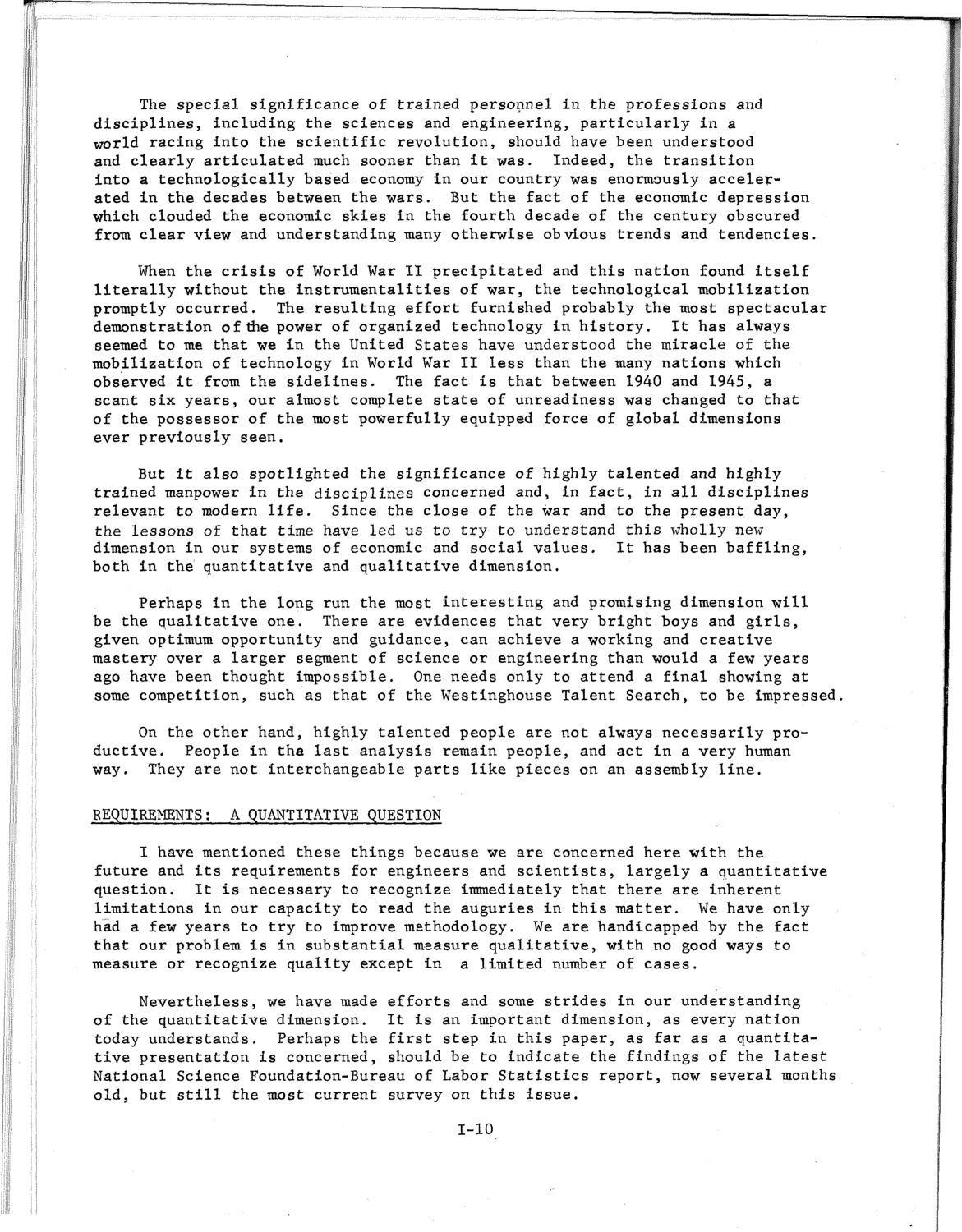| |
| |
Caption: SWE - Proceedings of the First International Conference of Women Engineers and Scientists
This is a reduced-resolution page image for fast online browsing.

EXTRACTED TEXT FROM PAGE:
The special significance of trained personnel in the professions and disciplines, including the sciences and engineering, particularly in a world racing into the scientific revolution, should have been understood and clearly articulated much sooner than it was. Indeed, the transition into a technologically based economy in our country was enormously accelerated in the decades between the wars. But the fact of the economic depression which clouded the economic skies in the fourth decade of the century obscured from clear view and understanding many otherwise obvious trends and tendencies. When the crisis of World War II precipitated and this nation found itself literally without the instrumentalities of war, the technological mobilization promptly occurred. The resulting effort furnished probably the most spectacular demonstration of the power of organized technology in history. It has always seemed to me that we in the United States have understood the miracle of the mobilization of technology in World War II less than the many nations which observed it from the sidelines. The fact is that between 1940 and 1945, a scant six years, our almost complete state of unreadiness was changed to that of the possessor of the most powerfully equipped force of global dimensions ever previously seen. But it also spotlighted the significance of highly talented and highly trained manpower in the disciplines concerned and, in fact, in all disciplines relevant to modern life. Since the close of the war and to the present day, the lessons of that time have led us to try to understand this wholly new dimension in our systems of economic and social values. It has been baffling, both in the quantitative and qualitative dimension. Perhaps in the long run the most interesting and promising dimension will be the qualitative one. There are evidences that very bright boys and girls, given optimum opportunity and guidance, can achieve a working and creative mastery over a larger segment of science or engineering than would a few years ago have been thought impossible. One needs only to attend a final showing at some competition, such as that of the Westinghouse Talent Search, to be impressed. On the other hand, highly talented people are not always necessarily productive. People in the last analysis remain people, and act in a very human way. They are not interchangeable parts like pieces on an assembly line. REQUIREMENTS: A QUANTITATIVE QUESTION I have mentioned these things because we are concerned here with the future and its requirements for engineers and scientists, largely a quantitative question. It is necessary to recognize immediately that there are inherent limitations in our capacity to read the auguries in this matter. We have only had a few years to try to improve methodology. We are handicapped by the fact that our problem is in substantial measure qualitative, with no good ways to measure or recognize quality except in a limited number of cases. Nevertheless, we have made efforts and some strides in our understanding of the quantitative dimension. It is an important dimension, as every nation today understands. Perhaps the first step in this paper, as far as a quantitative presentation is concerned, should be to indicate the findings of the latest National Science Foundation-Bureau of Labor Statistics report, now several months old, but still the most current survey on this issue. I-10
| |